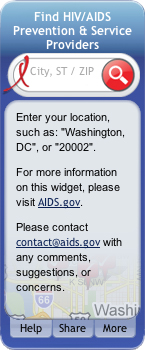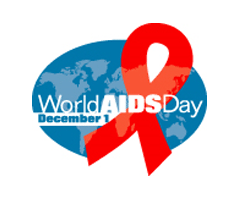
Right now, we are experiencing a domestic epidemic that demands a renewed commitment, increased public attention, and leadership…To accomplish these goals we must undertake a more coordinated national response to the epidemic. The Federal Government can’t do this alone, nor should it. Success will require the commitment of governments at all levels, businesses, faith communities, philanthropy, the scientific and medical communities, educational institutions, people living with HIV, and others…
– President Barack Obama
On the occasion of World AIDS Day 2011, we invite faith-based and community organizations across the United States to consider how you might engage your members–or share with others your best practices- today and throughout the year to support those with HIV/AIDS and help achieve an AIDS-free generation.
Our nation’s churches, temples, mosques, synagogues and community organizations are uniquely positioned to contribute to the national effort to reverse the course of the HIV epidemic in America. Reaching our goals of ending stigma against AIDS; making sure everyone who is HIV+, knows it; getting everyone who needs it treatment; and all the other goals the President put forth in the National HIV/AIDS Strategy require everyone to work together. These are not the kinds of goals government can achieve alone!
For World AIDS Day 2011, the Obama Administration is promoting the theme “Leading with Science, Uniting for Action.” The theme reflects the Federal government's commitment to move toward the goal of an AIDS-free generation, both in the U.S. and around the world.
Making an AIDS-free America will depend on the American people!
There are many options for faith communities interested in joining in the observation of World AIDS Day 2011. We know communities who have held meetings to remind people to be tested. Some have offered testing. Others hold support groups for people with HIV. The truth is, anything you do to increase awareness has the potential to keep someone HIV-free, and to connect people with HIV to early treatment. As each community has unique needs, we invite you to be engaged in what ever way you feel is the most beneficial and respectful.
-
Encourage congregants to learn their HIV status so that, if infected, they can take advantage of life-saving treatments. Such efforts will help identify some of the more than 230,000 Americans living with HIV who are unaware of their infection. Early diagnosis is essential to enhancing and extending the lives of those with HIV. It also reduces the likelihood that one will infect others. You can also help individuals find HIV testing and other services near you by using the HIV/AIDS Prevention & Service Providers Locator (shown below). Simply enter a Zip Code and a list of HIV testing sites and other HIV-related services is returned, complete with a map to help figure out how to get there. Does your organization have a website or blog? Embed this widget in your blog so that readers can always locate these services via your site.
-
Work to reduce stigma and discrimination against people living with HIV/AIDS.The ongoing stigma associated with HIV disease—and the behaviors that can lead to infection—continue to interfere with our efforts, as a nation, to end this illness. Fear of discrimination causes some Americans to avoid learning their HIV status, disclosing their status, or accessing needed medical care or other supportive services. Faith leaders are especially well positioned to deliver messages of understanding and non-judgmental support that can serve as constructive examples to others in the community.
- Plan a local event.The World AIDS Day event planning guide can help you get started. You can customize and use these World AIDS Day posters and add the World AIDS Day logo to your websites. Help your congregants learn about HIV by sharing these fact sheets. Join the World AIDS Day conversation on Twitter: use the hashtag #WAD2011 to find and share local events. Learn about additional World AIDS Day resources. There are also other Awareness days that might be appropriate for your congregation.
To see some quick facts about HIV/AIDS in the United States click here: White House Office of HIV/AIDS Policy. Here are just a few:
- Over one million people are currently living with HIV/AIDS in the U.S.;
- It is estimated that every 9 ½ minutes someone in the U.S is infected with HIV/AIDS;
- Of those infected, approximately 21 percent (one in five) are unaware of their infection;
- America's poorest urban neighborhoods HIV prevalence was more than 4 times the national average.
- In the United States most new HIV infections occur among African American young people, ages 13-19 accounting for 68% of new AIDS cases among teens in the U.S.
For more ideas on how faith communities can initiate, or enhance existing, HIV/AIDS activities or programs, please read:
- United in Battling HIV/AIDS: A Guide to Understanding How Faith Communities Can Make a Difference (from the National Alliance of State and Territorial AIDS Directors)
- Partnerships for the Common Good: A Partnership Guide for Faith-Based and Neighborhood Organizations (from the White House Office for Faith-based and Neighborhood Partnerships, p. 32)
- Also, read more about efforts of the Centers for Faith-based and Neighborhood Partnerships to support the National HIV/AIDS Strategy.
Alexia Kelley serves as Deputy Director of The White House Office of Faith-based and Neighborhood Partnerships.



